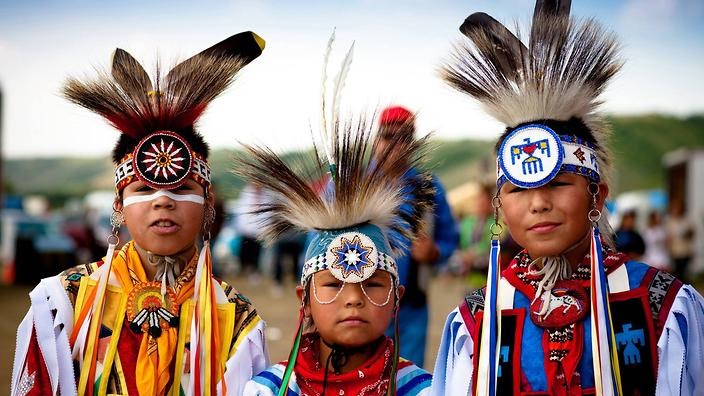On June 16, 2021, Canada’s Senate voted to pass Bill C-15, the United Nations Declaration on the Rights of Indigenous Peoples Act (the UNDRIP Act or the Act), into law.
How does this Act impact Canadian federal and provincial laws concerning Indigenous treaty rights? How can it potentially support Indigenous Nations in terms of land claims negotiations or direct our efforts to decolonize resources and knowledge in ways that respect Indigenous cultural values, collective responsibilities, and relationships?
The Basics
UNDRIP is a non-binding declaration adopted by the United Nations General Assembly in 2007. The declaration sets out the individual and collective rights of Indigenous peoples and their rights to cultural identity, traditional language, access to employment, health, and education.
Indigenous people have never given up their rights to govern themselves. In this regard, UNDRIP doesn’t create any new rights; it also doesn’t limit existing rights. As the Assembly of First Nations states, UNDRIP “ is all about taking long overdue action to respect and implement rights First Nations already have.”
UNDRIP serves as a reminder of the historical injustices and ongoing challenges faced by Indigenous Canadians – such as the devastating forced removal of Indigenous children from their families and communities through the Residential Schools system and the ongoing effects of colonization and systemic racism on Indigenous people’s health, economic and cultural wellbeing.
It’s also a way to hold our governments and Canadians accountable as we work towards establishing truth, the first essential step in the path towards reconciliation.
Gaining approval at a federal level took time. The Government of Canada initially voted against the declaration at the United Nations when it was first introduced in 2007. That position was reversed under the Harper Government in 2010. UNDRIP was officially endorsed by Canada in 2016 and finally recognized through Bill C-15 in 2021.
Practical Implications
The Act requires the Government of Canada to work with Indigenous peoples to review and reform Canada’s laws and to collaborate with Indigenous peoples to develop a National Action Plan. The first action plan must be completed in two years and include measures to:
- “address injustices, combat prejudice and eliminate all forms of violence, racism and discrimination, including systemic racism and discrimination.”
- “promote mutual respect and understanding as well as good relations, including through human rights education”; and
- “measures related to monitoring, oversight, recourse or remedy or other accountability measures with respect to the implementation of the Declaration.”
The practical, legal implications of UNDRIP and how it can be implemented have been widely and LOUDLY debated. Canadian courts and tribunals have already referenced the Declaration to help ensure that provincial and federal laws (at least some of them) comply with international obligations. But the process is far from straightforward, and outcomes still need to be determined.
Currently, the Declaration has no Constitutional status. And as recently as May 2022, the federal government referred to it as “an interpretive aid only.” But change is taking place, slowly if uncertainly. UNDRIP is making a difference.
What’s happening in Western Canada?
In July 2015, six years before Bill C-15 passed, Alberta’s NDP government became the first jurisdiction in Canada to publicly pledge to implement UNDRIP “in a way that is consistent with our Constitution and with Alberta law.” Under subsequent provincial governments in Alberta, there has been no clear movement forward. However, its principles are being discussed with numerous task forces, and business organizations focused on Indigenous economic development.
In 2019, British Columbia passed the Declaration on the Rights of Indigenous Peoples Act – DRIPA. This legislation was intended to harmonize provincial law and international law.
But implementation is always challenging. In October 2021, the Gitxaala First Nation launched a judicial review in the BC Supreme Court, seeking to overturn several mineral claims granted for exploration on Banks Island, part of Gitxaala traditional territory. The Gitxaala’s position is that granting mineral claims in their traditional territory without their consent or knowledge violates DRIPA. The Nation is seeking a declaration that DRIPA legally requires the BC government to consult and cooperate with Gitxaala (as well as other Indigenous Nations) about measures necessary to bring the provincial Mineral Tenure act into compliance with UNDRIP. As of January 2023, the case is still ongoing. Legal proceedings are expected to be heard by the Court in April 2023.
What’s next?
To be clear, UNDRIP remains an aspirational document. There are myriad ways that legal and policy considerations will need to be addressed for UNDRIP to be fully implemented provincially and federally. We expect this will require broader, long-term systemic change within our society and certainly within legal frameworks for treaty negotiations.
At the very least, UNDRIP provides foundational principles to begin a process of collaboration. It’s a first step and one that’s long overdue.
Let’s get moving.


